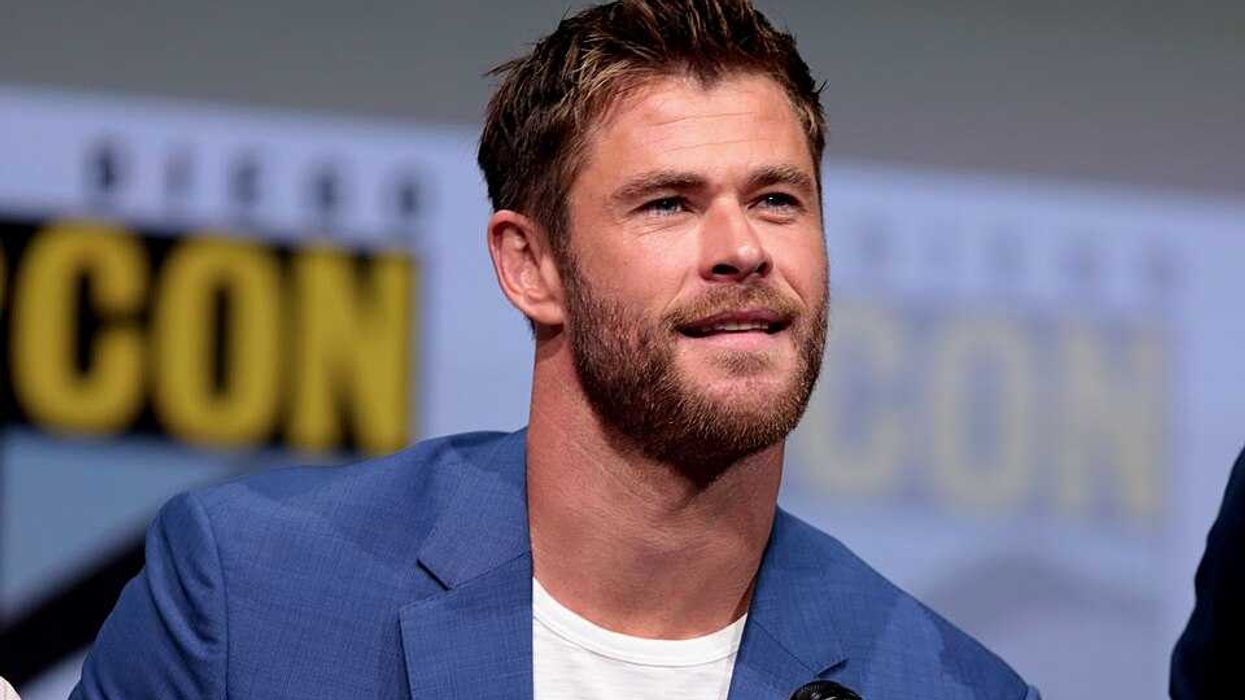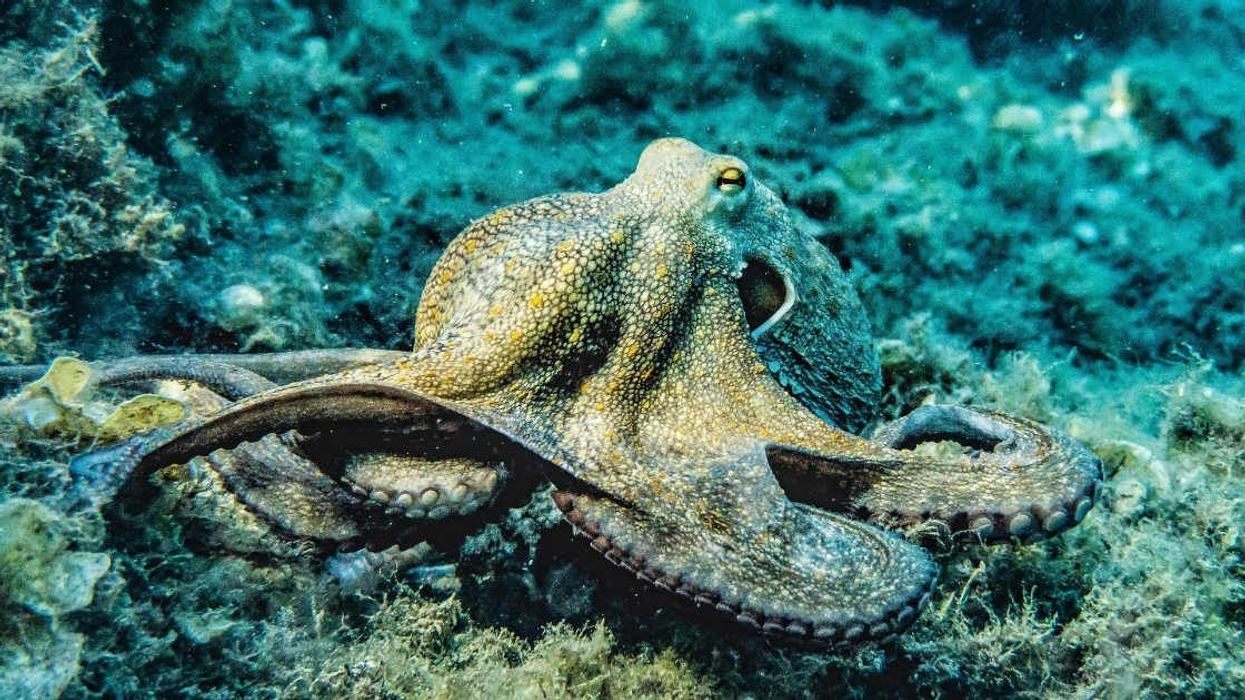The advertisements seem to be everywhere. They wink like neon eyes from the sides of San Francisco's railcars, radiate a lime-colored glow from within bus stop kiosks, unfurl the green carpet of their messages along the flanks of local websites.The ad design is striking, the enticing color drawing tired eyes away from the gray cityscape or the flickering computer screen. Some of the statements are clear and confident: Green is a city with country air. Green is 4 wheels on the road versus 400. Let's green this city. Others seem a bit more cryptic and smack of typical ad copy that seeks not to introduce clarity but incite desire: Green is yellow. Green is blue. Green is sitting next to a perfect stranger.Really?
 A discerning eye can tease out the source of these ads, identified along the perimeter in script so thin it's easy to overlook: Pacific Gas and Electric, a 102-year-old $12-billion utility company. The company claims on its website that the ads are part of a partnership with the community, a sort of mutual encouragement for the city and the utility to strive to become the greenest in the nation."We're hoping people are saying ‘What is that?' ‘What does it mean?' and ‘What can I do?'" says Keely Wachs, the environmental communications manager for PG&E. We're seated at the Starbucks around the corner from the granite edifice of PG&E headquarters, but Wachs, sporting a blue windbreaker and sipping tea, looks like he jogged here from the REI a few blocks farther away. He declined to say what the company was paying its public relations firm, Venables Bell, for the campaign, but offered several other of its line items: $1.7 million to put solar panels on schools; $1 billion over three years for energy efficiency; $1 million for encouraging customers to neutralize their carbon use.
A discerning eye can tease out the source of these ads, identified along the perimeter in script so thin it's easy to overlook: Pacific Gas and Electric, a 102-year-old $12-billion utility company. The company claims on its website that the ads are part of a partnership with the community, a sort of mutual encouragement for the city and the utility to strive to become the greenest in the nation."We're hoping people are saying ‘What is that?' ‘What does it mean?' and ‘What can I do?'" says Keely Wachs, the environmental communications manager for PG&E. We're seated at the Starbucks around the corner from the granite edifice of PG&E headquarters, but Wachs, sporting a blue windbreaker and sipping tea, looks like he jogged here from the REI a few blocks farther away. He declined to say what the company was paying its public relations firm, Venables Bell, for the campaign, but offered several other of its line items: $1.7 million to put solar panels on schools; $1 billion over three years for energy efficiency; $1 million for encouraging customers to neutralize their carbon use. Those sound like chummy, we're-all-in-this-together gestures, but PG&E has a sordid history of environmental degradation that casts suspicion on any attempts to seem environmentally friendly. The company has had a slow and litigious reaction to rectifying its past mistakes, from the poisoning of Hinkley, California's water, exposed by Erin Brockovich, to the battles in its hometown of San Francisco, where it delayed closing its coal-fired power plant, the largest single source of pollution in the Bay Area, for five years despite the protests of its neighbors who suffer from abnormally high rates of cancer and asthma."I'll admit I have trust issues with PG&E," says Marie Harrison, a Bayview, California resident who is an environmental justice coordinator with the activist group Greenaction, which fought PG&E for 11 years and ultimately succeeded in having the plant shuttered in April 2006. "I see all these ‘Let's green this city' signs, but what's the plan?"
Those sound like chummy, we're-all-in-this-together gestures, but PG&E has a sordid history of environmental degradation that casts suspicion on any attempts to seem environmentally friendly. The company has had a slow and litigious reaction to rectifying its past mistakes, from the poisoning of Hinkley, California's water, exposed by Erin Brockovich, to the battles in its hometown of San Francisco, where it delayed closing its coal-fired power plant, the largest single source of pollution in the Bay Area, for five years despite the protests of its neighbors who suffer from abnormally high rates of cancer and asthma."I'll admit I have trust issues with PG&E," says Marie Harrison, a Bayview, California resident who is an environmental justice coordinator with the activist group Greenaction, which fought PG&E for 11 years and ultimately succeeded in having the plant shuttered in April 2006. "I see all these ‘Let's green this city' signs, but what's the plan?"| Quote: |
| Over the last 30 years, as environmentalism has slowly shifted from fringe to fact of life, the definition of "green" has morphed into a hip, educated social identity, and a business PR model. |
 Over the last 30 years, as environmentalism has slowly shifted from fringe to fact of life, the definition of "green" has morphed into a hip, educated social identity, and a public relations tool. "The idea is to advertise where you're weakest, and the companies that have the worst problems spend the most money to massage their reputations," says Sheldon Rampton, of the Center for Media and Democracy, which runs SourceWatch, an online newsletter that compares the claims of companies with their actual actions. One of Rampton's favorite examples is a 2001 partnership between British Petroleum and the National Wildlife Federation for a campaign to sell stuffed animals of endangered species in BP's gas stations. At the same time, the billion- dollar oil company was lobbying Congress to open the Arctic National Wildlife Refuge to oil drilling. Rampton now criticizes BP's $200 million makeover, which tweaked the company's logo to resemble a radiant green-and-yellow sun, and changed its name to "Beyond Petroleum." "It's the equivalent of Philip Morris opening one candy store and saying ‘We're beyond tobacco,'" he says. "It's dishonest."In the last few years, many of the largest and most lucrative companies in the world have unveiled some form of environmentally friendly initiatives. Wal-Mart has pledged a future of zero waste and 100 percent renewable energy in its stores. General Electric has committed $1.5 billion a year for the next three years to alternative-energy developments. Goldman Sachs, along with two private-equity firms and the Natural Resources Defense Council, recently brokered a deal for a $45-billion buyout of TXU Energy, with the condition that it will build only three coal-fired power plants, rather than the initially proposed 11. Most recently, 14 big players have announced the U.S. Climate Action Partnership, made up of massive conglomerates including BP America, Duke Energy, DuPont, General Electric, and PG&E, as well as Environmental Defense and the Natural Resources Defense Council. They call their plan "a market-driven approach to climate change" that calls for, among other things, incentives for innovation and rewards for early action-possibly their own. "Companies right now are really starting to think if you come out in favor of a law or action, you're going to get a seat at the table when it comes to planning that action or writing that law," Wasserman says.While environmentalists have traditionally stood on the other side of the protest line from corporations, many large organizations seem to know that the biggest impact can be made if they can actually work together with companies. "Hypocrisy is the first step toward meaningful change," says Paul Sheldon, a senior consultant for Natural Capitalism Solutions, a consulting firm founded by Hunter Lovins. "It's critical that shareholders, customers, and critics hold companies accountable. … The company [will eventually] recognize it's not enough to do no harm. It's necessary, as part of the integrated bottom line of the organization, to actively be making the world a better place." No company has fully achieved these goals, according to Sheldon, but the one that has come the closest "is probably Clif Bar."It's 9 a.m. on a Monday morning and like many other offices across America, the headquarters of Clif Bar smells like freshly brewed coffee. Employees step over dogs and steer their bicycles through a mini maze of cubes in the converted warehouse, which feels more like a clubhouse than a corporation. Gary Erickson, a cyclist and climber, founded the energy-bar company in 1992 after cooking up the first batches in his mom's kitchen. Fifteen years later, Inc. magazine has recognized the $150 million-a -year company as one of the fastest growing in America three times. Though it hasn't hit the Fortune 500 list yet, the magazine named Erickson one of the best bosses in the small-business sector.Things work a little differently here in this Berkeley warehouse. Sales progress is charted with stuffed animals hanging from a climbing wall. Employees volunteer in the community on company time. The Clif Bar fleet runs on 100 percent biodiesel, which wafts the scent of French fries from its tailpipes. The research and design department looks less like a lab on the cutting edge of nutrition, and more like an actual kitchen where food is made-the stout bowled bellies of three KitchenAid mixers are lined up on the blond wood of a butcher block while ladles dangle above a behemoth 12-burner gas stove and professional convection ovens.On the Clif Bar package, the only indicator of a serious environmental sensibility is a fairly subtle seal stating that the ingredients are at least 70 percent organic. There's no lauding of the company's carbon neutrality, its attempts to coordinate better labor practices for the farmers who supply it with organic ingredients, or its role in the local community. It's something Elysa Hammond, the company's ecologist, who is tasked with treating the company less like a business and more like an ecosystem, is wondering if they should be more forthcoming about. "It's something we talk about with each other, but our real impact is if we can influence others."
Over the last 30 years, as environmentalism has slowly shifted from fringe to fact of life, the definition of "green" has morphed into a hip, educated social identity, and a public relations tool. "The idea is to advertise where you're weakest, and the companies that have the worst problems spend the most money to massage their reputations," says Sheldon Rampton, of the Center for Media and Democracy, which runs SourceWatch, an online newsletter that compares the claims of companies with their actual actions. One of Rampton's favorite examples is a 2001 partnership between British Petroleum and the National Wildlife Federation for a campaign to sell stuffed animals of endangered species in BP's gas stations. At the same time, the billion- dollar oil company was lobbying Congress to open the Arctic National Wildlife Refuge to oil drilling. Rampton now criticizes BP's $200 million makeover, which tweaked the company's logo to resemble a radiant green-and-yellow sun, and changed its name to "Beyond Petroleum." "It's the equivalent of Philip Morris opening one candy store and saying ‘We're beyond tobacco,'" he says. "It's dishonest."In the last few years, many of the largest and most lucrative companies in the world have unveiled some form of environmentally friendly initiatives. Wal-Mart has pledged a future of zero waste and 100 percent renewable energy in its stores. General Electric has committed $1.5 billion a year for the next three years to alternative-energy developments. Goldman Sachs, along with two private-equity firms and the Natural Resources Defense Council, recently brokered a deal for a $45-billion buyout of TXU Energy, with the condition that it will build only three coal-fired power plants, rather than the initially proposed 11. Most recently, 14 big players have announced the U.S. Climate Action Partnership, made up of massive conglomerates including BP America, Duke Energy, DuPont, General Electric, and PG&E, as well as Environmental Defense and the Natural Resources Defense Council. They call their plan "a market-driven approach to climate change" that calls for, among other things, incentives for innovation and rewards for early action-possibly their own. "Companies right now are really starting to think if you come out in favor of a law or action, you're going to get a seat at the table when it comes to planning that action or writing that law," Wasserman says.While environmentalists have traditionally stood on the other side of the protest line from corporations, many large organizations seem to know that the biggest impact can be made if they can actually work together with companies. "Hypocrisy is the first step toward meaningful change," says Paul Sheldon, a senior consultant for Natural Capitalism Solutions, a consulting firm founded by Hunter Lovins. "It's critical that shareholders, customers, and critics hold companies accountable. … The company [will eventually] recognize it's not enough to do no harm. It's necessary, as part of the integrated bottom line of the organization, to actively be making the world a better place." No company has fully achieved these goals, according to Sheldon, but the one that has come the closest "is probably Clif Bar."It's 9 a.m. on a Monday morning and like many other offices across America, the headquarters of Clif Bar smells like freshly brewed coffee. Employees step over dogs and steer their bicycles through a mini maze of cubes in the converted warehouse, which feels more like a clubhouse than a corporation. Gary Erickson, a cyclist and climber, founded the energy-bar company in 1992 after cooking up the first batches in his mom's kitchen. Fifteen years later, Inc. magazine has recognized the $150 million-a -year company as one of the fastest growing in America three times. Though it hasn't hit the Fortune 500 list yet, the magazine named Erickson one of the best bosses in the small-business sector.Things work a little differently here in this Berkeley warehouse. Sales progress is charted with stuffed animals hanging from a climbing wall. Employees volunteer in the community on company time. The Clif Bar fleet runs on 100 percent biodiesel, which wafts the scent of French fries from its tailpipes. The research and design department looks less like a lab on the cutting edge of nutrition, and more like an actual kitchen where food is made-the stout bowled bellies of three KitchenAid mixers are lined up on the blond wood of a butcher block while ladles dangle above a behemoth 12-burner gas stove and professional convection ovens.On the Clif Bar package, the only indicator of a serious environmental sensibility is a fairly subtle seal stating that the ingredients are at least 70 percent organic. There's no lauding of the company's carbon neutrality, its attempts to coordinate better labor practices for the farmers who supply it with organic ingredients, or its role in the local community. It's something Elysa Hammond, the company's ecologist, who is tasked with treating the company less like a business and more like an ecosystem, is wondering if they should be more forthcoming about. "It's something we talk about with each other, but our real impact is if we can influence others."| Quote: |
| Sales progress is charted with stuffed animals hanging from a climbing wall. Employees volunteer in the community on company time. The Clif Bar fleet runs on 100 percent biodiesel, which wafts the scent of French fries from its tailpipes. |
 The biggest criticism about the business is complaints about the wrappers, which aren't recyclable. "We're working on it," says Dean Mayer, communications manager. While Clif Bar continues the search for a better baggie, in 2002 it stopped shrink-wrapping its packages, saving 90,000 tons of plastic a year.As for the threat of appearing like greenwashers, it's a remote concern. Clif Bar doesn't advertise. "We all grew up just inundated with ads and I think it's really refreshing to put money in other goals," says Hammond.Ivan Storck heartily approves. The founder of Sustainable Marketing thinks ads are a waste of paper. "This is the second round of green marketing," Storck says, citing the focus in the early 1990s on recycling and reducing waste as the first wave. "Now the new focus is energy, and what's different this time is the pervasiveness of the internet and the possibility of getting real facts about a company. It's so much easier to find stuff and do preliminary research."Which means the consumer can have a relationship with a company that isn't based on capitalism, but driven by values that are revealed with open, honest dialogue like the kind that occurred on a recent February evening in Berkeley, California.Hundreds of people are swarming around the entrance to Berkeley's Zellerbach Hall, waiting in the general admission line of a sold-out show. Moments before curtain call, the will call window is clogged with people frantically phoning friends as a few more tickets become available.When the lights go down, the auditorium swells with cheers. A tall thin man takes the stage, his bald head shining as he squints through his spectacles. He introduces himself as Michael Pollan, author of The Omnivore's Dilemma, a 2006 tome that explores the modern consumer's food choices. In it, Pollan critiques the organic supermarket giant Whole Foods' use of narratives from farmers posted inside the stores, revealing that some of the stories weren't as accurate as they purported to be. Tonight, he welcomes his guest, a curly-haired fellow in khakis and a maroon button-down, which bears a familiar logo above the breast: Whole Foods.John Mackey, CEO, gives a 45-minute presentation on his vision of the past, present, and future of food, including five minutes of gruesome animal-feed-lot footage. "I never expected a food retailer to show a piece of video like that," Pollan jokes to him when he's done. "It was absolutely clear that no public-relations firm had a hand in your presentation."In May of 2006, Mackey responded to The Omnivore's Dilemma with an 11-page letter disputing some of Pollan's claims. Mackey audited his own company and discovered that in fact, 45 percent of each store's produce came from within a 200-mile radius and 78 percent came from independent and family farms. The letter was ultimately posted on their respective blogs, and prompted a spirited online exchange. Mackey says the whole experience has caused him to "make a mission check." How can one of the country's fastest-growing companies move beyond the simple expectation of selling the most goods at the least amount of cost and turning a profit for the shareholders?Mackey has unveiled a number of initiatives, and that night in Berkeley he added a few more: a $30-million investment in unique, locally based food artisans around the world; a more sophisticated rating system for food that considers what is "beyond organic" by taking into account conditions like worker welfare, humane animal treatment, locality, and carbon emissions during production; partnerships to certify Whole Foods products as "fair trade," meaning the growers made a living wage to bring the good food to your plate.Each new initiative was met with cheers from the audience of 2,000 critical liberals from the Bay Area-people more apt to grow their produce in kitchen gardens and buy from local markets than set foot in a Whole Foods. The event suggests a new paradigm companies can use to their advantage: welcome the public and actually respond to what they have to say. One got the feeling that Mackey pulled off a brilliant PR move. He took the stage, answered questions from the audience, and projected himself as a normal, every day vegan who cares just as much as you do about being green. He just happens to be the rich and powerful owner of a very successful Fortune 500 company.
The biggest criticism about the business is complaints about the wrappers, which aren't recyclable. "We're working on it," says Dean Mayer, communications manager. While Clif Bar continues the search for a better baggie, in 2002 it stopped shrink-wrapping its packages, saving 90,000 tons of plastic a year.As for the threat of appearing like greenwashers, it's a remote concern. Clif Bar doesn't advertise. "We all grew up just inundated with ads and I think it's really refreshing to put money in other goals," says Hammond.Ivan Storck heartily approves. The founder of Sustainable Marketing thinks ads are a waste of paper. "This is the second round of green marketing," Storck says, citing the focus in the early 1990s on recycling and reducing waste as the first wave. "Now the new focus is energy, and what's different this time is the pervasiveness of the internet and the possibility of getting real facts about a company. It's so much easier to find stuff and do preliminary research."Which means the consumer can have a relationship with a company that isn't based on capitalism, but driven by values that are revealed with open, honest dialogue like the kind that occurred on a recent February evening in Berkeley, California.Hundreds of people are swarming around the entrance to Berkeley's Zellerbach Hall, waiting in the general admission line of a sold-out show. Moments before curtain call, the will call window is clogged with people frantically phoning friends as a few more tickets become available.When the lights go down, the auditorium swells with cheers. A tall thin man takes the stage, his bald head shining as he squints through his spectacles. He introduces himself as Michael Pollan, author of The Omnivore's Dilemma, a 2006 tome that explores the modern consumer's food choices. In it, Pollan critiques the organic supermarket giant Whole Foods' use of narratives from farmers posted inside the stores, revealing that some of the stories weren't as accurate as they purported to be. Tonight, he welcomes his guest, a curly-haired fellow in khakis and a maroon button-down, which bears a familiar logo above the breast: Whole Foods.John Mackey, CEO, gives a 45-minute presentation on his vision of the past, present, and future of food, including five minutes of gruesome animal-feed-lot footage. "I never expected a food retailer to show a piece of video like that," Pollan jokes to him when he's done. "It was absolutely clear that no public-relations firm had a hand in your presentation."In May of 2006, Mackey responded to The Omnivore's Dilemma with an 11-page letter disputing some of Pollan's claims. Mackey audited his own company and discovered that in fact, 45 percent of each store's produce came from within a 200-mile radius and 78 percent came from independent and family farms. The letter was ultimately posted on their respective blogs, and prompted a spirited online exchange. Mackey says the whole experience has caused him to "make a mission check." How can one of the country's fastest-growing companies move beyond the simple expectation of selling the most goods at the least amount of cost and turning a profit for the shareholders?Mackey has unveiled a number of initiatives, and that night in Berkeley he added a few more: a $30-million investment in unique, locally based food artisans around the world; a more sophisticated rating system for food that considers what is "beyond organic" by taking into account conditions like worker welfare, humane animal treatment, locality, and carbon emissions during production; partnerships to certify Whole Foods products as "fair trade," meaning the growers made a living wage to bring the good food to your plate.Each new initiative was met with cheers from the audience of 2,000 critical liberals from the Bay Area-people more apt to grow their produce in kitchen gardens and buy from local markets than set foot in a Whole Foods. The event suggests a new paradigm companies can use to their advantage: welcome the public and actually respond to what they have to say. One got the feeling that Mackey pulled off a brilliant PR move. He took the stage, answered questions from the audience, and projected himself as a normal, every day vegan who cares just as much as you do about being green. He just happens to be the rich and powerful owner of a very successful Fortune 500 company.
















 Otis knew before they did.
Otis knew before they did.